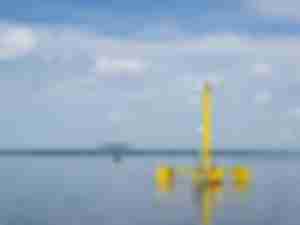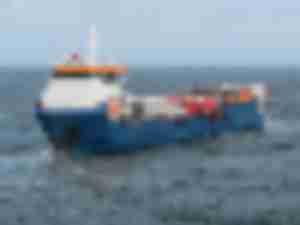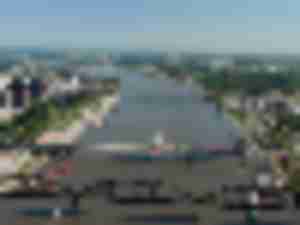Fit for 55 package – analysing the impact on European industry
On Wednesday 14 July the European Commission published the Fit for 55 package reshaping the European emissions trading landscape. The proposal covers all aspects of the existing system, including the overall amount of allowances supplied into the market (“cap”), the allocation of free certificates and the functioning of the Market Stability Reserve. At the same time, it introduces sweeping reforms, by expanding emissions trading to the maritime sector, introducing a Carbon Border Adjustment Mechanism (CBAM), and proposing a new trading scheme for the road transport and buildings sectors.
LA’s Seroka expects lead In US import market share will continue
The Port of Los Angeles expects that it and other West Coast ports will maintain their lead in import market share over other U.S. ports, according to Gene Seroka, executive director, Port of Los Angeles.
New England Aqua Ventus will launch first US floating offshore wind turbine In 2023/24
New England Aqua Ventus expects to launch the first U.S. floating wind turbine into the Gulf of Maine in 2023/24, according to Dr. Habib Dagher, founding executive director of the University of Maine’s Advanced Structures and Composites Center (ASCC).
Container inspection: An unsolved need.
This article is on containers, more specific on the inspection of containers and the challenges that increasing trade brings along for that important task in our need for global security.
Whitehead Is new Propeller Club Executive Vice President
Retired U.S. Coast Guard Rear Admiral Joel Whitehead, has been appointed as the new executive vice president of the International Propeller Club of the United States (IPCUS).
Yellow’s CEO sees LTL in growth mode in opening SMC3 Connections conference
As the overall U.S. economy and e-commerce demands in particular continue to grow, the less-than-truckload transportation industry should flourish provided it meets such challenges as having enough drivers and available equipment.
Five Rivers Distribution’s President Shell sees Arkansas River recovery but urges infrastructure investments in inland waterways
The McClellan-Kerr Arkansas River Navigation System crosses the state of Arkansas into Oklahoma traversing the state until it reaches the Port of Catoosa, near Tulsa, Oklahoma. The 445-mile navigation channel begins at the confluence of the White and Mississippi Rivers.
Green Shipping Line proposes U.S. feeder ships to deliver components to offshore wind farms using U.S. Atlantic Coast ports
U.S.-based Green Shipping Line (GSL) is proposing to build the first of what it hopes will be a fleet of feeder ships to transport wind turbine components from U.S. Atlantic coast ports to new Atlantic coast wind farms, according to Percy Pyne, Chairman and CEO.
IRPT’s Andres says US inland ports need more infrastructure investment
Aimee Andres, executive director, Inland Rivers, Ports and Terminals, Inc. (IRPT), says U.S. inland river ports and terminals are recovering from the 2019 flooding, but need major new investments including support for moving more containers on barges to the Port of New Orleans and other Gulf Coast ports.
PMSA report warns that California ports’ zero emission goals could be limited by grid capacity
On June 9th the Pacific Merchant Shipping Association (PMSA) published a report, prepared by the engineering firm Moffat & Nichol, which raises serious questions about the ability of California’s grid to meet zero emission goals, utilizing increased electricity, as proposed by California ports.
© Copyright 1999–2024 American Journal of Transportation. All Rights Reserved










